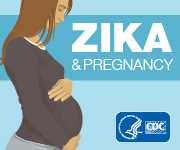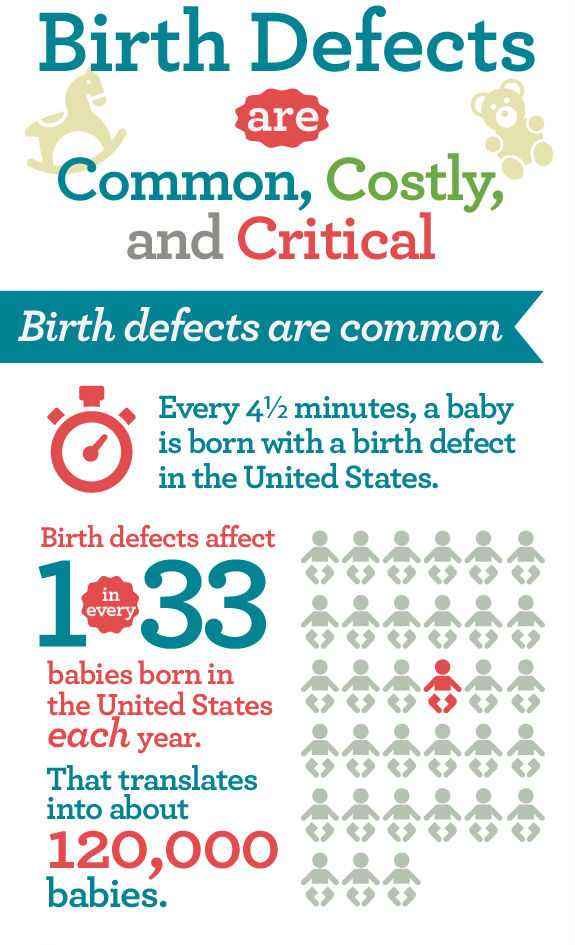About Us
Birth defects affect 1 in 33 babies and are a leading cause of infant mortality in the United States. More than 5,500 infants die each year because of birth defects, which is twice as many as from sudden infant death syndrome (SIDS).
In addition, babies who survive and live with birth defects are at increased risk for developing many lifelong physical, cognitive, and social challenges.
CDC works to identify causes of birth defects, find opportunities to prevent them, and improve the health of those living with birth defects. By applying a public health approach incorporating three essential elements—surveillance or disease tracking, research to identify causes, and prevention research and programs—we can rapidly translate scientific findings into appropriate public health interventions. Understanding the potential causes of birth defects can lead to recommendations, policies, and services to help prevent them. CDC works toward a day when every child is born with the best health possible.
Tracking
Accurately finding infants and young children with birth defects is the first step in preventing birth defects and reducing their effect. This is generally achieved through a birth defects tracking system. Tracking where and when birth defects occur and who they affect gives us important clues about birth defects prevention and allows us to evaluate our efforts. CDC tracks birth defects through several state tracking systems and regional programs, including the Metropolitan Atlanta Congenital Defects Program (MACDP).
Research
Most birth defects are thought to be caused by a complex mix of factors. These factors include our genes, our behaviors, and things in the environment. For some birth defects, we know the cause. But for most, we don’t. And we don’t understand well how factors work together to cause birth defects. Research can help us answer many of these questions.
The National Birth Defects Prevention Study (NBDPS) is the largest population-based study in the United States looking at risk factors and potential causes of birth defects. CDC funds the study and collects data with researchers from other study sites, collectively called the Centers for Birth Defects Research and Prevention (CBDRP).
Results from the NBDPS teach us more about what might raise or lower the risk of having a baby with a birth defect. The NBDPS has made key contributions in understanding the risks of certain birth defects when specific medications are used just before and during pregnancy. Data from the study have also clearly demonstrated that maternal obesity is a strong risk factor for a number of major birth defects and have confirmed the association between maternal smoking and having a baby with a cleft lip or cleft palate.
Prevention
Although we do not know the cause of most birth defects, the good news is that we know how to prevent some birth defects.
For example, we have learned that taking folic acid before and during the early weeks of pregnancy greatly reduces the risk of serious defects of the brain and spine called neural tube defects or NTDs. This research finding led to the advice that all women who can become pregnant should take 400 micrograms of folic acid daily. We have also learned that drinking alcohol during pregnancy can cause the baby to be born with fetal alcohol spectrum disorders (FASDs). Therefore, CDC works with partners to educate women about the risk of drinking alcohol during pregnancy.
Improving our ability to prevent birth defects is an important public health priority issue that requires continued commitment. CDC hopes to learn more about the potential role of environmental exposures, medications, maternal infections, maternal diabetes, obesity, and genetic risk factors in causing birth defects. Expansion of tracking and research efforts holds great promise in identifying new causes of birth defects and strengthening birth defects prevention strategies.
Learn more about preventing birth defects »
- Page last reviewed: May 23, 2017
- Page last updated: May 23, 2017
- Content source:



 ShareCompartir
ShareCompartir
